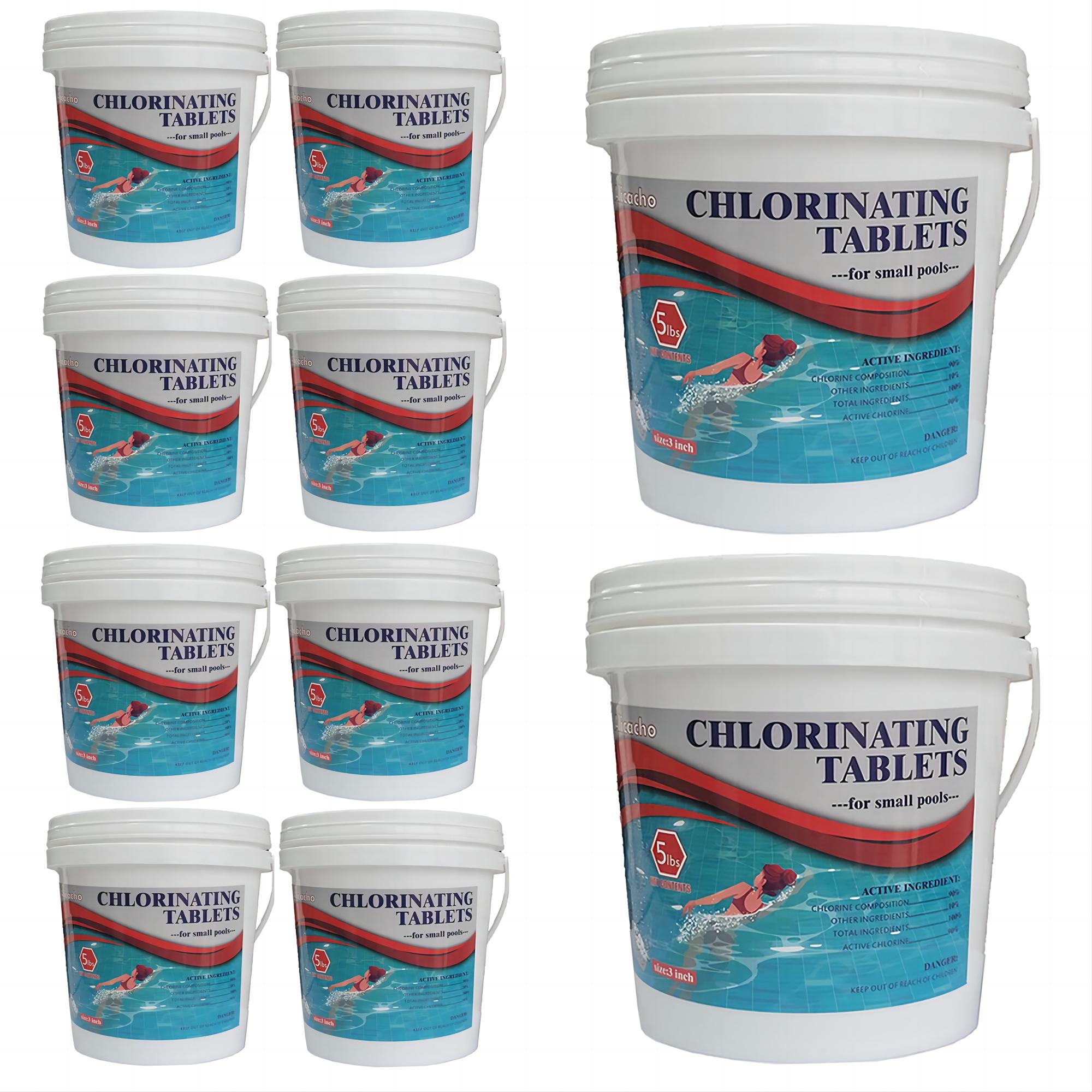CYA is one of the crucial factors in maintaining the chemical balance of your pool water. It should not be too high or too low, just the right level. But, what will you do if it is too high, do you know how to lower cyanuric acid in pool to gain control over your pool’s well-being?
Cyanuric acid is added in pools to serve as a conditioner or stabilizer, it protects the chlorine content of your pools making it enough to kill all the bacteria, viruses, or other pathogens that may affect the cleanliness and health of your pool. It fights the sun’s ultraviolet rays to overcome chlorine making it less effective. But whilst, it is important to have CYA added to your pool, it should be controlled. Having levels of CYA too high can also lead to several pool water problems, which you may not want.
In this post, we are going to discuss the methods on how to lower cyanuric acid in pool, as well as the different reasons why CYA in pools can become too high. Once you finish the whole post, you might finally understand many facts about CYA, helping you maintain your pool water, so it will always be safe to swim in. If cyanuric acid levels are too low, you can raise them by adding a stabilizer or cyanuric acid directly to the pool water. Check out the detailed explanation in this article.
Part 1. What Causes Cyanuric Acid to be High in a Pool?
The right levels of cyanuric acid in pools must be understood well to make sure that your pool is always sparkling clean, safe, and healthy! Any pool water content must be maintained at its ideal level to avoid effects that may harm the pool, as well as its swimmers. Any pool owner would not want their pool destroyed by having unbalanced chemical levels.
Once levels of cyanuric acid are not stable, it could pose huge effects on the pH and alkalinity levels of your pool water. It must be made sure that it is only in its ideal range which is between 30 and 50 ppm. Cyanuric acid works by forming a weak bond with your free chlorine, protecting it from the UV rays of the sun that reduce the chlorine content of your pool. If a pool owner manages CYA well, it has been known to reduce the levels of chlorine that are needed to maintain the minimum chlorine residual if you have an outdoor pool.

It may be hard to be in between levels when talking about water chemistry, as everything must come in handy. A responsible pool owner, always does water testing to make sure needed levels are always reached. If you plan to own a pool for a very long time, you have to master the skills of balancing water chemistry so you can always enjoy clean, healthy, and safe swimming pool water!
Before we get to understand how to lower cyanuric acid in pool, we must first know more about the different causes why cyanuric acid is high in pools.
1. There is no proper pool maintenance.
One of the main causes of high levels of CYA is the lack of pool maintenance. Once you maintain your pools, you also do a test of component levels to make sure that everything is still within range, if you do not execute it weekly, then it can lead to not foreseen increase in CYA levels. Also, once your pool is not properly maintained, you will most likely encounter issues with your pool equipment which can lead to serious problems, and if this happens irregularities and dirt in pools will be too hard to trace back. But you can always call for a professional in case you think your problem has become too difficult to solve.
2. The use of algaecide.
If you often use algaecide, it may also lead to high levels of cyanuric acid. Some of them have CYA as an ingredient, and once it is excessively used, there can be a build-up of the chemical in your pool.
3. You have overused chlorine stabilizer.
The overusing of chlorine stabilizers is one of the most common reasons for high cyanuric acid levels. Chlorine stabilizers also known as CYA, are added to your pool water to protect chlorine from the sun’s ultraviolet rays. But if you use too much of it, there will be a build-up of cyanuric acid, to make sure that you add the needed amount, you can use a stabilizer calculator.
4. The use of stabilized chlorine.
Some types of chlorine like dichlor and trichlor are already stabilized, which means that they already have cyanuric acid as content. If you use one pound of trichlor in a 10,000-gallon pool, it can raise the cyanuric acid levels by 6 ppm. You must always read the label of your pool chemicals to ensure that you will not accidentally double-dose your water.

5. Tap water
Some areas also add cyanuric acid to their water supply for swimming pools, and once you have not tested or monitored your cyanuric level in your pool, it could greatly affect it. You can ask your local water service provider to be able to be secured with all the details regarding your local water supply.
These are only some of the possible causes why cyanuric acid is high in your pools. By knowing all these possible causes, it will now be easier to understand and devise wiser ways how to lower cyanuric acid in pool.
Part 2. Methods On How to Lower Cyanuric Acid in a Pool?
When it comes to lowering the cyanuric acid levels in your pool you can try different ways such as draining your pool water. You can also use a cyanuric acid reducer as an alternative option in case you want to avoid huge expenses in draining and refilling your pool once more. Of course, in case you choose to drain your pool, there can be excessive water wastage, and you also need the energy to refill, pump, as well balance chemicals for the new water you need to replenish your drained pool.
A CYA reducer can neutralize acid, which disintegrates CYA at a molecular level. To use it, you need to follow the list of steps, below.
- You have to make sure that your pool water has a temperature of at least 65 degrees Fahrenheit, you also have to make sure that you do not add any type or number of algaecides, phosphate treatments, or clarifiers a week before applying the CYA reducer.
- You have to test levels of chlorine and CYA in your pool water. It is needed that your chlorine level is lower since chlorine can attack the active ingredients a reducer contains, which can hamper its effectiveness.
- You also have to make sure that total alkalinity and pH are both in the proper or required range.
- Then start adding the CYA reducer around the perimeter of the pool, and then start circulating your water through the use of your pump for 4 to 6 hours after application.
- Start retesting the CYA and chlorine levels of your pool to check if both of them have reached the needed or the required range.
- You can observe for seven days, and if after the observation period, your CYA levels are still high, you can then opt to apply the second dose of the CYA reducer.
As we have said before, you also have the option to drain your pool, and in case you opted to do it, you have to follow steps such as:
- Test your pool water to determine all the current levels of all the important pool water components.
- In case there are unwanted levels, look for possible causes.
- Start calculating the amount of water that needs to be drained.
- Once properly calculated, start draining.
- Then, refill your pool once more, and do the retesting of all the vital components.
- Once needed ranges or levels are reached, you have to monitor and maintain everything specifically levels of CYA as it is the reason why you have drained your pool water.
These methods on how to lower cyanuric acid in pool can be helpful especially if you are a first-time pool owner. You have to make sure you always keep your head in the game to avoid unsanitary pool water.
Part 3. FAQs
1. Can I Swim with High CYA?
It is technically safe to swim in pools with high levels of CYA, however it can still affect other pool chemicals present. Also, water will surely become unsanitary once required levels of CYA are not maintained.
2. Will Baking Soda Lower Cyanuric Acid?
It is a no. CYA and baking soda work in very different ways when it comes to your pool water. It can only raise the total alkalinity of your pool; it can’t be used to protect or stabilize chlorine levels in pools.
3. Does Sunlight Burn off Cyanuric Acid?
CYA is used to protect the chlorine content of your pools from the sun’s UV rays. If you have an outdoor pool and there is not enough CYA in your pools, chlorine will be easily broken down by sunlight.



